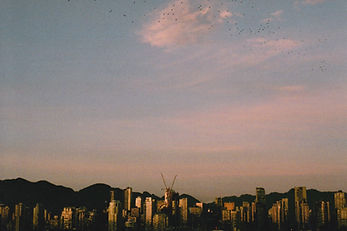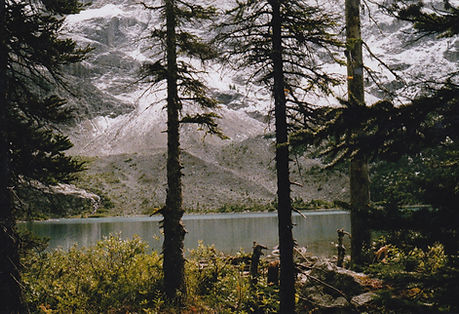
Sonia Sobrino Ralston
Somerville, MA
Sonia Sobrino Ralston is a designer and researcher from Vancouver, Canada. She is currently the Research and Teaching Fellow in Art + Design at the Northeastern College of Media, Art, and Design. She is interested in the intersections between landscape, architecture, and the history of technology, and her current design and writing projects center on the potential of plants to be understood as sensors, the organization and datafication of living collections, and the biopolitical history of bioindicators. Sonia recently graduated with distinction from the Harvard Graduate School of Design with a Master of Landscape Architecture where she was awarded the Landscape Architecture Thesis Prize and the Digital Design Prize for her thesis, “Uncommon Knowledge.” She also holds a Master of Architecture from Princeton University where she received a certificate in Media + Modernity. She was the assistant curator for the 2022 Tallinn Architecture Biennale on the theme “Edible: Or, the Architecture of Metabolism,” and recently assisted with the design and organization of a symposium on landscape pedagogy at the Harvard GSD and supported a science communication project at the metaLAB at Harvard. Her writing has been published in the Avery Review and Cartha Magazine, she co-authored a chapter in Urban Transformations, and her collaborative work has been exhibited in Tallinn, Cambridge, and Sao Paulo.
featured artwork





Forests as Data Governance
digital animation, digital Collage, 1920x1080px, various digital collage sizes, 2023
responding to SIGHTLINES
Forests as Data Governance is a fragment of a larger work focused on the design of a speculative future for environmental data governance. We don't usually think of the landscape itself--its plants, trees, and soils--as a form of data or informational tool, and yet they operate as a form of responsive wetware that responds to the site and environmental cycles. This speculative vision for a physical database for information, a forest made of binary code grafted to the genetic code of plants, imagines a future where plants are understood as a critical data infrastructure to be collectively stewarded.
In the summer of 2022, a wildfire burned across the Columbia River valley, 200 meters away from Google’s first hyperscale data center in The Dalles, Oregon, near Taylor Lake. While fire-resistant plants such as Oregon oaks and Ponderosa pines survived, the fragility of information infrastructure became urgent. Systems to protect critical infrastructure along the river involve high-fidelity LIDAR scans of the area to simulate systems of flood protection and damage. But in a future where plants become critical infrastructure, a form of long-term information storage, the fluctuations of the environment become embedded in its management. The future envisions a nursery and genetic laboratory where environmental information is grafted into the genetic information of ponderosa pines, Oregon oaks, and incense cedars. Through the collective management of the landscape, the future of a fire-prone site relies on the sensitive management and care for the land, rather than the black boxes of water-hungry data centers. Rendering plants alongside the pointclouds of a LIDAR dataset of the site, plants are elevated to the level of infrastructure through high-fidelity botanical models in the submitted animations. As plants live and grow on the site, over time, they too become integrated into the abstracted pointcloud as a form of landscape data.
more on Data Governance

Sonia's thesis Uncommon Knowledge: Practices and Protocols for Environmental Information responding to the contemporary environmental information economy at the site of Google's first hyperscale data center in water stressed The Dalles, Oregon on display at Harvard Graduate School of Design in 2023. Data visualization of various sites including the site featured in SIGHTLINES where on view. Read and view more about her work HERE. A video introduction to her research is also below.
more from Sonia's perspective

Since moving to Boston as part of my landscape architecture education, I spent many summer afternoons walking in the Arnold Arboretum. Here, pictured with a smoke bush (Cotinus coggygria), I became fascinated with the way that botanical collections organize and collect plants as part of an informational system.

I grew up in a suburb of Vancouver, BC, where I was used to situating myself by looking at the mountains. Since my childhood, however, wildfires have been creeping closer and closer, and increasingly over the summer the city is enveloped in a blanket of smoke. As areas all over the west coast become increasingly known as centres for technology and information services, this spurred questions for me about how the city’s technological infrastructure is entangled with ecological assemblages.

In recent years, the landscapes close to home are increasingly affected by the growing number of fires. Taken on a lake just an hour away, the mountains and trees disappear into the smoke. Faced with these scenes, I wondered how I might rethink my own relationship with the landscapes around me; how might they be considered critical infrastructures to protect?

This image, taken in a glacier lake not far from the smokey scene above a few days earlier, is important to me as a landscape designer who considers fire in this work. Landscapes here are full of plants, sensitively adapted to harsh environments and rich in information, ready to adapt under the existential threat of fire. How might we learn from, and pay attention to, the intelligence of plants and natural systems?

